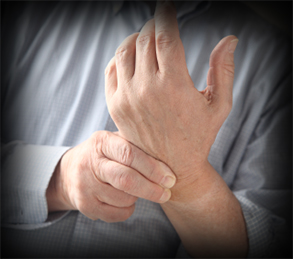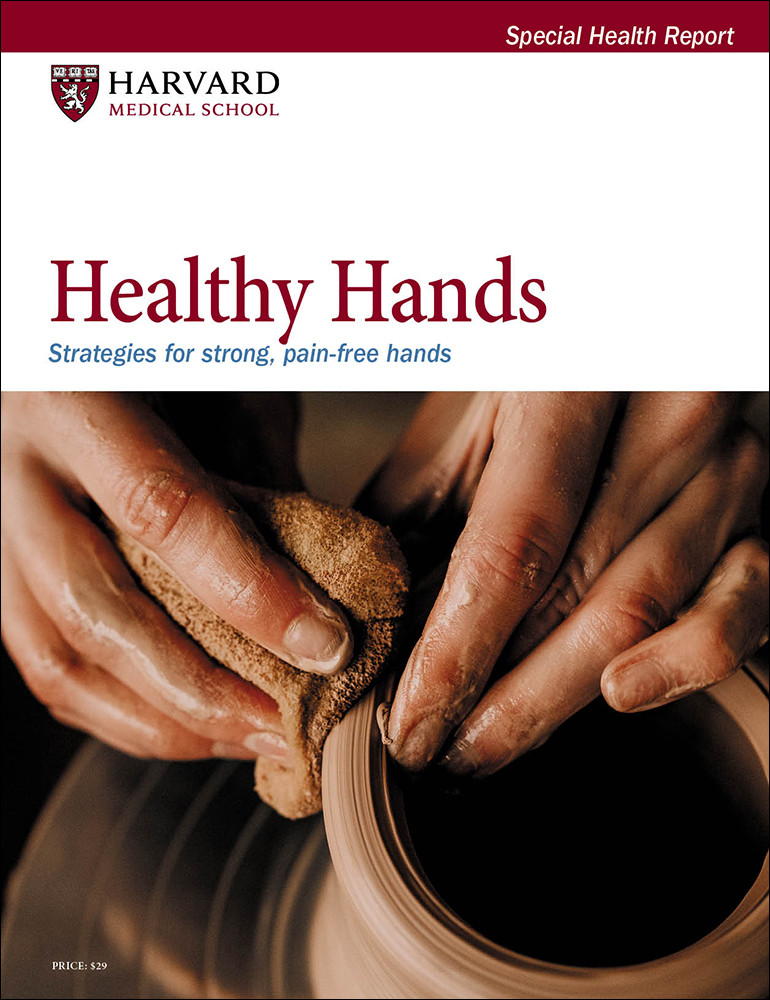
5 timeless habits for better health

What are the symptoms of prostate cancer?

Is your breakfast cereal healthy?

When pain signals an emergency: Symptoms you should never ignore

Does exercise give you energy?

Acupuncture for pain relief: How it works and what to expect

How to avoid jet lag: Tips for staying alert when you travel

Biofeedback therapy: How it works and how it can help relieve pain

Best vitamins and minerals for energy

Should you take probiotics with antibiotics?


Healthy Hands: Strategies for strong, pain-free hands
Beneath the skin, your hands are an intricate architecture of tendons, joints, ligaments, nerves, and bones. Each of these structures is vulnerable to damage from illness or injury. If your hands hurt, even simple tasks can become a painful ordeal. Healthy Hands: Strategies for strong, pain-free hands describes the causes and treatments for many conditions that can cause hand pain. It also features information on hand exercises, as well as handy tools and other gadgets that take strain off your hands.
Other Product Information
Is hand pain interfering with your ability to do all you want — and need — to do? Find out how you can ease the pain and limitations of arthritis, carpal tunnel syndrome, and other hand ailments.
Hands are unavoidably vulnerable to ailments and injuries. When they happen, your daily routine can become an ordeal, ordinary tasks can become a struggle, and simple pleasures are put aside. Fortunately, almost every hand problem can be successfully treated. Pain can be significantly reduced. Mobility and dexterity can be regained.
This Special Health Report will give you an empowering understanding of your hands’ mechanics, the diseases that compromise their function, and most important, what you can do to treat, lessen, and prevent the major threats to your hands’ health and strength.
Do you suffer with arthritis? The report will brief you on advances in quelling the symptoms. You’ll find out about the growing choices in medications, as well as promising complementary therapies and alternative remedies.
The report will tell you about treatments that offer relief from carpal tunnel and other “pinched” nerve syndromes. You’ll learn what causes “trigger finger” and how “writer’s cramp” is cured. The report will give you the key questions to ask yourself — and your doctor — before considering joint replacement surgery, and much more.
So, enjoy life hands-on. Order your copy of this Special Health Report now.
Prepared by the editors of Harvard Health Publishing in consultation with Philip E. Blazar, MD John B. and Buckminster Brown Professor of Orthopedic Surgery, Harvard Medical School; Division Chief, Hand and Upper Extremity, Brigham and Women’s Hospital; Program Director, Harvard Hand and Upper Extremity Felloship and Gayle B. Lang, MS, OT, CHT Clinical Specialist in Hand Therapy, Outpatient Rehabilitation Services, Brigham and Women’s Hospital. 41 pages. (2025)
Does knuckle cracking cause arthritis?
Cracking your knuckles may annoy those around you, but it probably won’t raise your risk for arthritis. That’s the conclusion of several studies that compared rates of hand arthritis among habitual knuckle-crackers and people who didn’t crack their knuckles.
The “pop” of a cracked knuckle is caused by bubbles bursting in the synovial fluid. The bubbles pop when you pull the bones apart, either by stretching the fingers or bending them backward, creating negative pressure.
Even if knuckle cracking doesn’t cause arthritis, there’s still good reason to let go of the habit. Chronic knucklecrackers are more likely to have swollen hands and reduced grip strength. And there are at least two published reports of injuries suffered while people were trying to crack their knuckles.
- The healthy hand
- Hand structure and physiology
- Hand doctors and other clinicians
- Arthritis of the hand
- Osteoarthritis
- Rheumatoid arthritis
- Other types of arthritis that affect the hands
- Special bonus section: Advances in artificial joints for the hand
- Barbara’s story: Surgery for basal joint arthritis
- Tendon trouble
- De Quervain’s tendonitis (or tenosynovitis)
- Trigger finger
- Tennis elbow
- Golfer’s elbow
- Dupuytren’s disease
- Ganglion cysts
- Exercise for the hand
- Range-of-motion exercises
- Strengthening exercises
- Stretching exercises
- Resisted isometrics
- Carpal tunnel syndrome and other “pinched” nerves
- Carpal tunnel syndrome
- Anne’s story: Coping with repetitive stress injury
- Cubital tunnel syndrome
- Radial tunnel syndrome
- Traumatic hand and wrist injuries
- Wrist sprains
- Finger sprains, jams, and dislocations
- Tendon injuries
- Fractures
- Finger amputations
- Getting a grip: Handy gadgets and advice
- Resources
- Glossary
You might also be interested in…

The Joint Pain Relief Workout: Healing exercises for your shoulders, hips, knees, and ankles
Is joint pain holding you back? Perhaps an achy ankle or sore knee is making it difficult to enjoy a run through your favorite park or even taking a short walk. Or maybe a throbbing hip or shoulder prevents you from whacking a golf ball or performing simple tasks like carrying a bag of groceries. The exercises in this report, The Joint Pain Relief Workout: Healing exercises for your shoulders, hips, knees, and ankles, can help relieve ankle, knee, hip, or shoulder pain, and help you become more active again, which can help you stay independent long into your later years.

5 timeless habits for better health

What are the symptoms of prostate cancer?

Is your breakfast cereal healthy?

When pain signals an emergency: Symptoms you should never ignore

Does exercise give you energy?

Acupuncture for pain relief: How it works and what to expect

How to avoid jet lag: Tips for staying alert when you travel

Biofeedback therapy: How it works and how it can help relieve pain

Best vitamins and minerals for energy

Should you take probiotics with antibiotics?
Free Healthbeat Signup
Get the latest in health news delivered to your inbox!
Sign Up